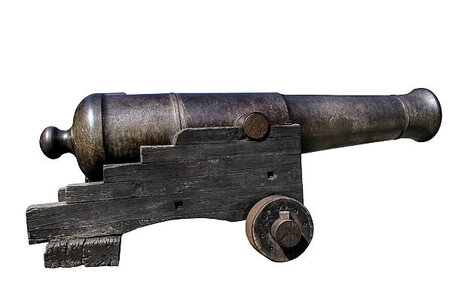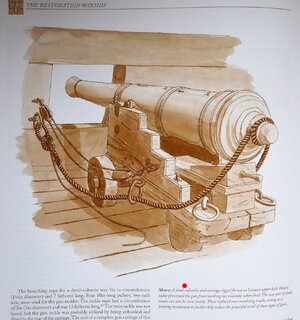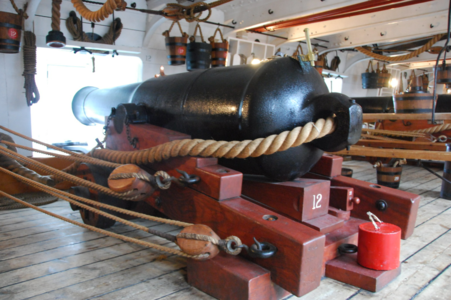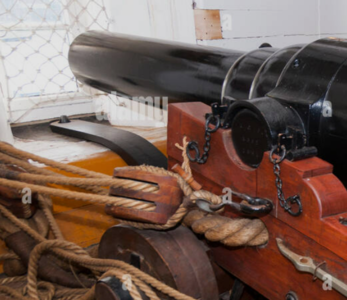The statenjacht model I am currently working on calls for rather unusual cannon trucks having wheels on the front and a skid on the rear similar to that shown in the attached photo. Wondering if anyone knows how these might be rigged? (Side tackles? Breaching rope? Etc.) The guns are described as small caliber used primarily for signaling.















